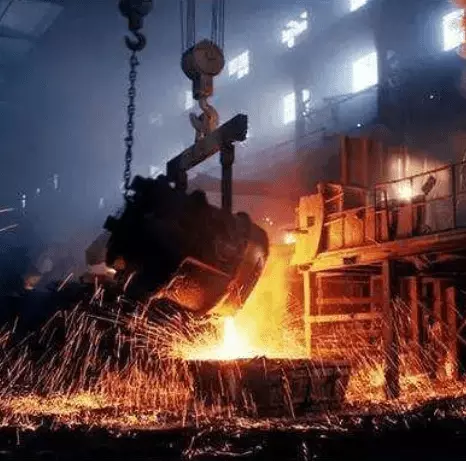What is the future trend of the steel industry?
Recently, the World Iron and Steel Association released data showing that in April 2023, the crude steel production of 63 countries included in the World Iron and Steel Association's statistics was 161.4 million tons, a year-on-year decrease of 2.4%.
The data released by the China Iron and Steel Industry Association also shows that in April 2023, the country produced 92.640 million tons of crude steel, a year-on-year decrease of 1.50%.
At the first quarter economic operation symposium of some steel enterprises held in April, the China Iron and Steel Industry Association called on steel enterprises to adhere to the principle of "three fixed and three not", actively reduce production, and jointly maintain the stable operation of the steel market.
Regarding the recent reduction in steel production, Bohai Securities Research Report stated that factors such as slower infrastructure driving effect, lower than expected steel demand, cost recovery, and weak market demand have led to operating losses for steel mills, resulting in increased pressure for steel companies to reduce production.

What is the future trend of the steel market?
Looking ahead to the future, multiple industry insiders believe that the steel market is mainly characterized by narrow fluctuations in the short term.
Under the influence of 'strong supply and weak demand', the inventory reduction performance is average, and the inventory of steel mills is showing a rebound trend, "said Wang Guoqing, director of Lange Steel Research Center." Therefore, from the current perspective, the steel market will still show a narrow range of fluctuations in the short term.
Ge Xin, Deputy Director of Lange Steel Research Center, believes that the steel market will exhibit a pattern of insufficient short-term demand, amplified off-season effects, and a decline in high supply levels. In June, the steel market will be affected by multiple factors, including the arrival of high temperature and rainy season, insufficient effective demand in off-season, etc., and the pressure on steel mills to reduce production will increase. It is expected that the domestic steel market will exhibit a volatile and bottoming out trend in June.
Donghai Futures researcher Liu Huifeng analyzed that the actual demand for steel is still weak, and with the arrival of large-scale rainfall in the central and eastern regions, the impact of weather on project construction will become increasingly apparent. So it is expected that steel prices will mainly fluctuate at the bottom.
The data released by the China Iron and Steel Industry Association also shows that in April 2023, the country produced 92.640 million tons of crude steel, a year-on-year decrease of 1.50%.
At the first quarter economic operation symposium of some steel enterprises held in April, the China Iron and Steel Industry Association called on steel enterprises to adhere to the principle of "three fixed and three not", actively reduce production, and jointly maintain the stable operation of the steel market.
Regarding the recent reduction in steel production, Bohai Securities Research Report stated that factors such as slower infrastructure driving effect, lower than expected steel demand, cost recovery, and weak market demand have led to operating losses for steel mills, resulting in increased pressure for steel companies to reduce production.

What is the future trend of the steel market?
Looking ahead to the future, multiple industry insiders believe that the steel market is mainly characterized by narrow fluctuations in the short term.
Under the influence of 'strong supply and weak demand', the inventory reduction performance is average, and the inventory of steel mills is showing a rebound trend, "said Wang Guoqing, director of Lange Steel Research Center." Therefore, from the current perspective, the steel market will still show a narrow range of fluctuations in the short term.
Ge Xin, Deputy Director of Lange Steel Research Center, believes that the steel market will exhibit a pattern of insufficient short-term demand, amplified off-season effects, and a decline in high supply levels. In June, the steel market will be affected by multiple factors, including the arrival of high temperature and rainy season, insufficient effective demand in off-season, etc., and the pressure on steel mills to reduce production will increase. It is expected that the domestic steel market will exhibit a volatile and bottoming out trend in June.
Donghai Futures researcher Liu Huifeng analyzed that the actual demand for steel is still weak, and with the arrival of large-scale rainfall in the central and eastern regions, the impact of weather on project construction will become increasingly apparent. So it is expected that steel prices will mainly fluctuate at the bottom.

